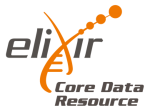Any feedback?
Literature summary extracted from
- What is adenine doing in photolyase? (2010), J. Phys. Chem. B, 114, 4101-4106.
Activating Compound
| EC Number | Activating Compound | Comment | Organism | Structure |
|---|---|---|---|---|
| 4.1.99.3 | FADH2 | two pathways for the electron transfer: the direct one, where the electron is transferred from the terminal methyl group of flavin to the carbonyl group of a thymine, and the indirect one, where the electron is ultimately transferred from the amino group of adenine to the carbonyl groups of the thymine dimer. Adenine in photolyase acts as an electrostatic bouncer that shoves the charge flow from flavin toward the DNA lesion that photolyase repairs. Electron transfer occurs from the flavin photolyase cofactor to the cyclobutane ring of DNA, previously formed by light-induced cycloaddition of adjacent pyrimidine bases | Synechococcus elongatus PCC 7942 = FACHB-805 |
Organism
| EC Number | Organism | UniProt | Comment | Textmining |
|---|---|---|---|---|
| 4.1.99.3 | Synechococcus elongatus PCC 7942 = FACHB-805 | - |
- |
- |
Synonyms
| EC Number | Synonyms | Comment | Organism |
|---|---|---|---|
| 4.1.99.3 | DNA photolyase | - |
Synechococcus elongatus PCC 7942 = FACHB-805 |





